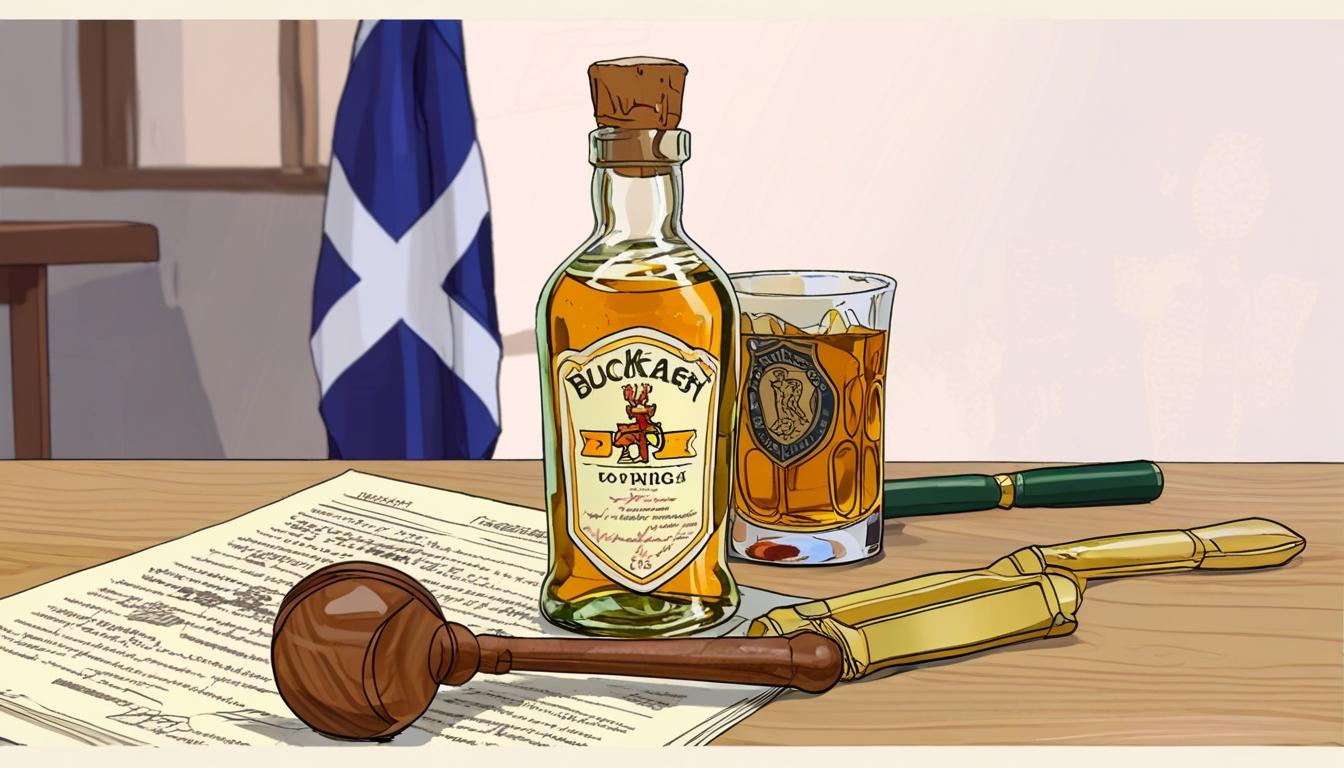A recent court case has further illuminated the complex relationship between Buckfast tonic wine and crime in Scotland, as a man has been sentenced for robbing a shop worker of the beverage. William Vanbeck, 46, was jailed for two years after pleading guilty to assault and robbery at Malkhas convenience store in Kirkcaldy. This incident occurred on September 5 last year, when Vanbeck, armed with a knife, threatened a shop employee to secure a bottle of Buckfast. His actions highlight the concerning trend of violence associated with the drink, which has been linked to thousands of crimes across the nation.
The Dunfermline Sheriff Court, where Vanbeck was sentenced by video link from prison, heard details of his troubled past. Defence lawyer Elizabeth Dryburgh noted that Vanbeck has faced significant challenges, particularly following a stroke five years ago that adversely impacted his mental health. He has struggled with alcohol dependency for most of his adult life, a situation exacerbated by job losses. During his time in custody, however, he has managed to abstain from alcohol. Sheriff Krista Johnston, acknowledging Vanbeck's extensive criminal record and history of knife-related offenses, imposed a two-year sentence, backdated to the date of remand. The sheriff also mandated a year of supervised release upon his return to the community, requiring him to engage in alcohol counselling.
The case has resonated in light of broader concerns regarding Buckfast, which has become a cultural touchstone in Scotland, yet is often tied to anti-social behaviour and violent crime. Reports have revealed that Buckfast has been linked to nearly 7,000 offences over the past three years, including serious violent crimes such as attempted murder and weapon assaults. Police and politicians have raised alarms about the prominent place Buckfast holds in these crime statistics, especially in the Strathclyde area, where its presence in police reports has prompted calls for a reevaluation of its availability.
The drink, produced at Buckfast Abbey in Devon, has a unique status in Scottish society. Initially marketed as a tonic, it has acquired a notorious reputation linked with social unrest and irresponsible consumption. Historical context reveals that Buckfast's popularity in Scotland began in post-war years, significantly among working-class communities. The rise of its association with violence has led some to argue that the beverage's high caffeine content contributes to aggressive behaviour. Despite these assertions, the manufacturers deny any direct responsibility for the actions of consumers.
Moreover, legal discussions surrounding Buckfast have been dramatic, as evidenced by a recent legal settlement involving Police Scotland. The dispute arose following an attempt by an officer to restrict retailers from stocking the drink, leading to a public apology from the police and a commitment to cease attempts to limit its availability, showcasing the contentious nature of the beverage's role in Scottish culture.
Beyond Vanbeck’s case, the courts have seen a variety of other incidents tied to alcohol and aggression. In another case highlighted from recent court dealings, a Dundee man named Aaron De Schafta stole food from a takeaway delivery driver while brandishing a pole, reflecting the often chaotic intersections of drinking culture and crime.
As discussions around public health and safety continue, the narrative surrounding Buckfast remains potent. It presents a juxtaposition of cultural heritage and societal malaise, raising challenging questions about how to balance individual responsibility against broader health implications in communities. The consequences of Vanbeck's actions, and those of others influenced by their alcohol consumption, serve as case studies in this ongoing dialogue.
In summary, the sentencing of William Vanbeck for his robbery emphasizes the continuing link between Buckfast tonic wine and crime in Scotland, a relationship likely to be scrutinised further as communities grapple with the impacts of substance abuse and violence. With the debate ongoing, it remains crucial for stakeholders to find comprehensive solutions that address both cultural values and public safety.
Reference Map
1. Paragraphs 1, 2, 3, 4, 5
2. Paragraph 6
3. Paragraph 6
4. Paragraph 6
Source: Noah Wire Services
